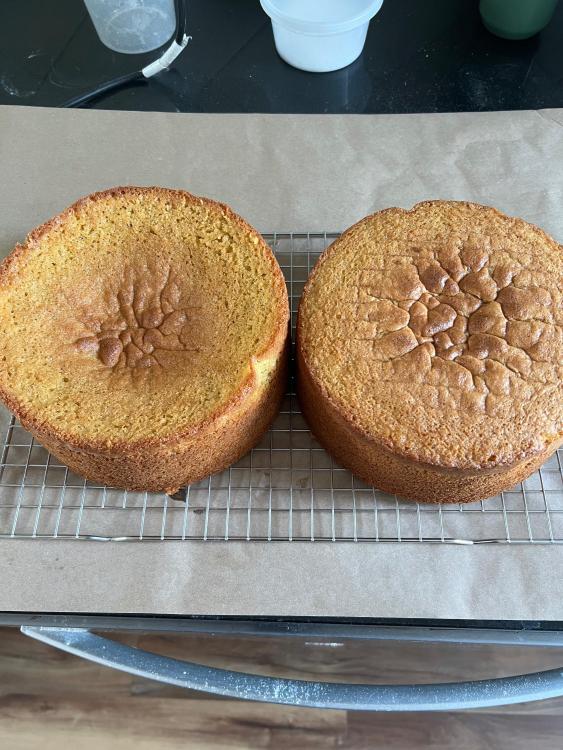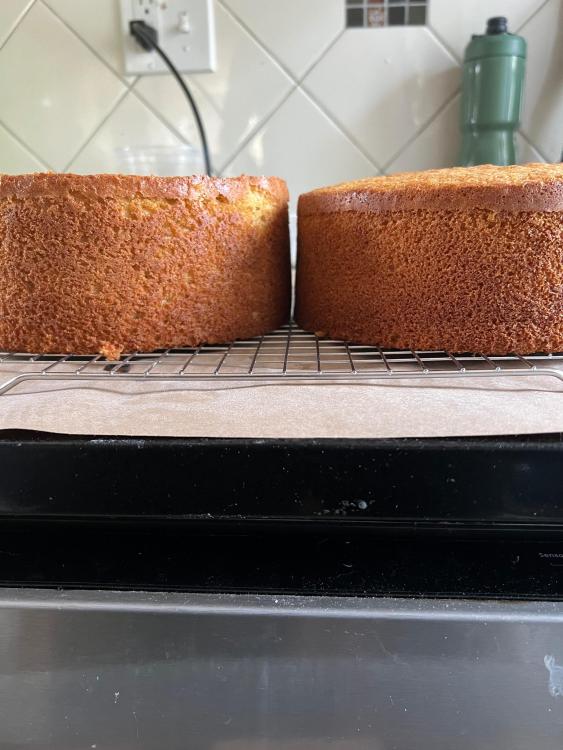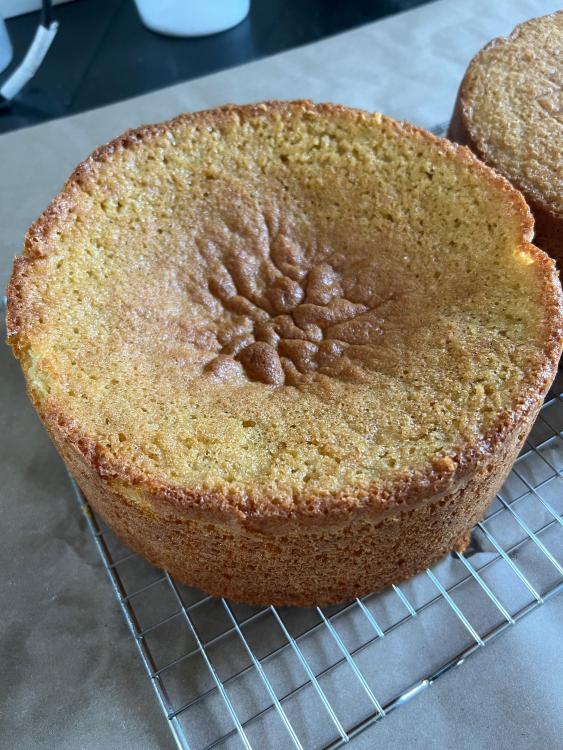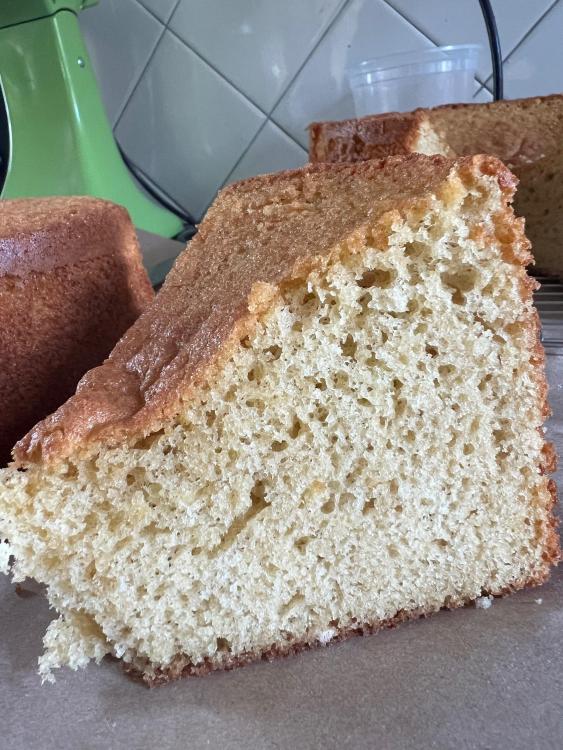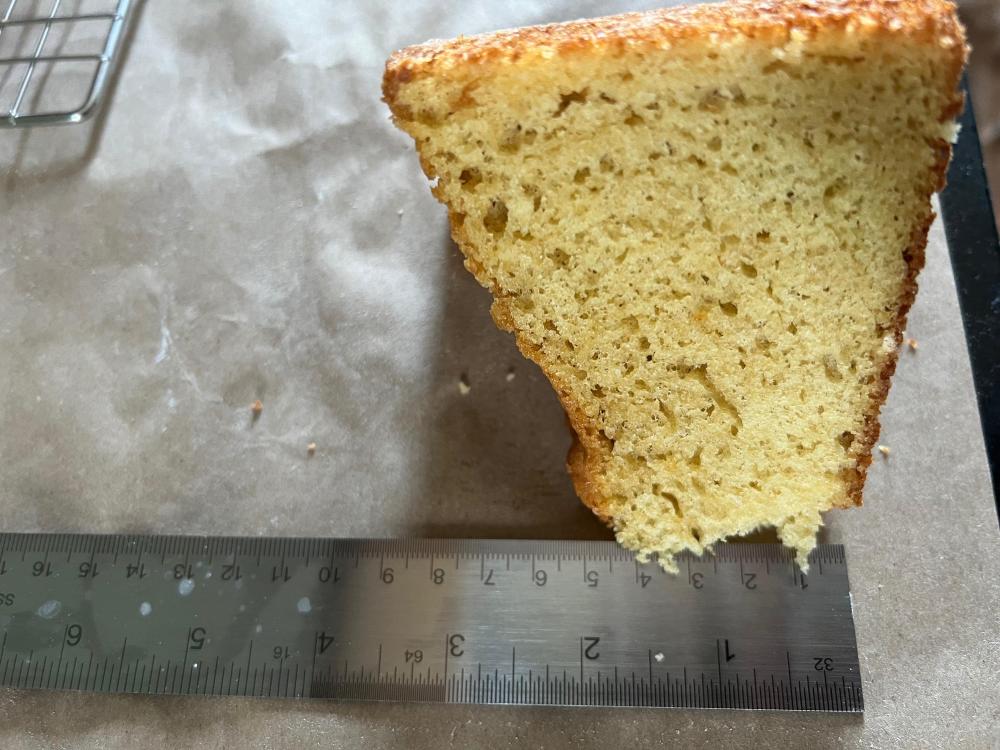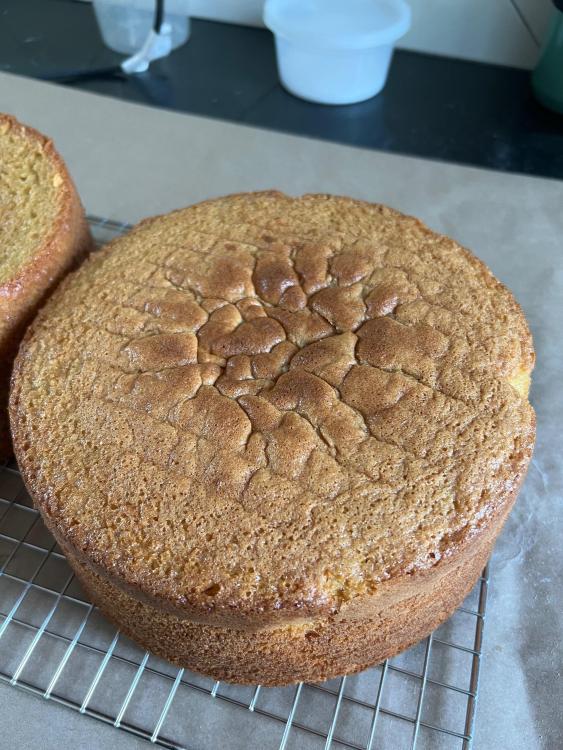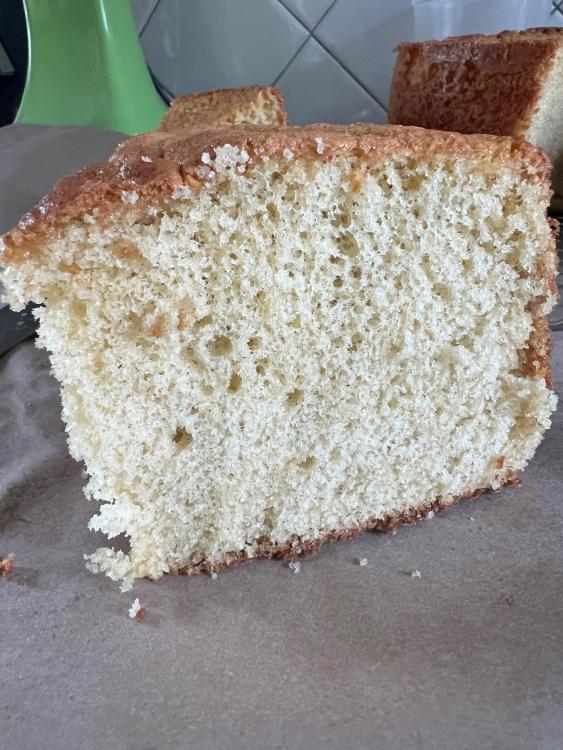On 7/8/2024 at 11:11 AM, Nn, M.D. said:The balance that is tough to hit is baking the cake at a high enough temperature to encourage vigorous moisture release and a nice rise, but at a low enough temperature that you don't risk drying the cake out, which is a dreaded outcome for an already low moisture cake. I would like to test one final experiment: the difference between baking a cake at 335F for 15 min and then 345F for another 15-20 vs. baking a cake at 340F for 30-35 min. I will post those results here when I do.
Ok so after a busy morning, I have the results. Keep in mind that for both cakes I used the exact same recipe and same method for preparing and mixing together the ingredients:
The cake on the left of the picture was baked at 340F for 35 min. The cake on the right was baked at 335F for 15 minutes and then 345F for 20 minutes. As you can see, the 340F cake sank dramatically, while I got a nice rise from the 335/345F cake. Let's take a closer look at each one, starting with the 340F cake.
Quantitatively, the center of the cake sank to 4 cm when baking, while the batter I poured into the cake tin sat around 7-8 cm. As cakes cook from outside->in and bottom->top, the crumb on the bottom and sides of the cake is close but regular and set. Looking at the sunken part in the center, the crumb is more open but very irregular, and instead of a fluffy texture, it looks congealed and still damp. Qualitatively, this was surprisingly very dry cake. Even the sunken parts were somehow dry. I think this fits with my theory that the right bake is a moisture game, and at 340F the batter at the center bottom doesn't set up as fast as it should to support efficient moisture release, so you get accumulation of moisture at the top of the cake. That moisture prevents a proper crumb from setting up, so you get areas of batter separated by steam pockets, thus the irregular holes. So the result is that the cake rises on the outside and stalls out and puckers in the center, until about 15-20 minutes when it gets overwhelmed by moisture and just collapses.
Quantitatively, the center of the cake rose to 7.5 cm with a slight dome, compared to the 7 cm outer edge. The crumb is open and springy, and the cake slice is lighter than it appears. The crumb is overall fairly regular, and while it is a bit closer at the bottom than at the top, it may just be that the cake on the bottom is weighed down. Qualitatively, this was such a moist and tender cake! It has a nice bite and a very fine crumb, but there isn't any part of the cake that is dry. While this cake did pucker like the first cake (as evidenced by the bumpy top crust), about 5 minutes after I increased the temperature, the top started to dome up. What I find curious is how regular the crumb is despite the change in temperature halfway through the bake. Mechanistically I can't really figure out what it might be, but it's clear that this result is superior. I wonder if baking the whole time at 345F would give me a better result, but at this point I have found a technique that I like. And if it ain't broke, don't fix it.


